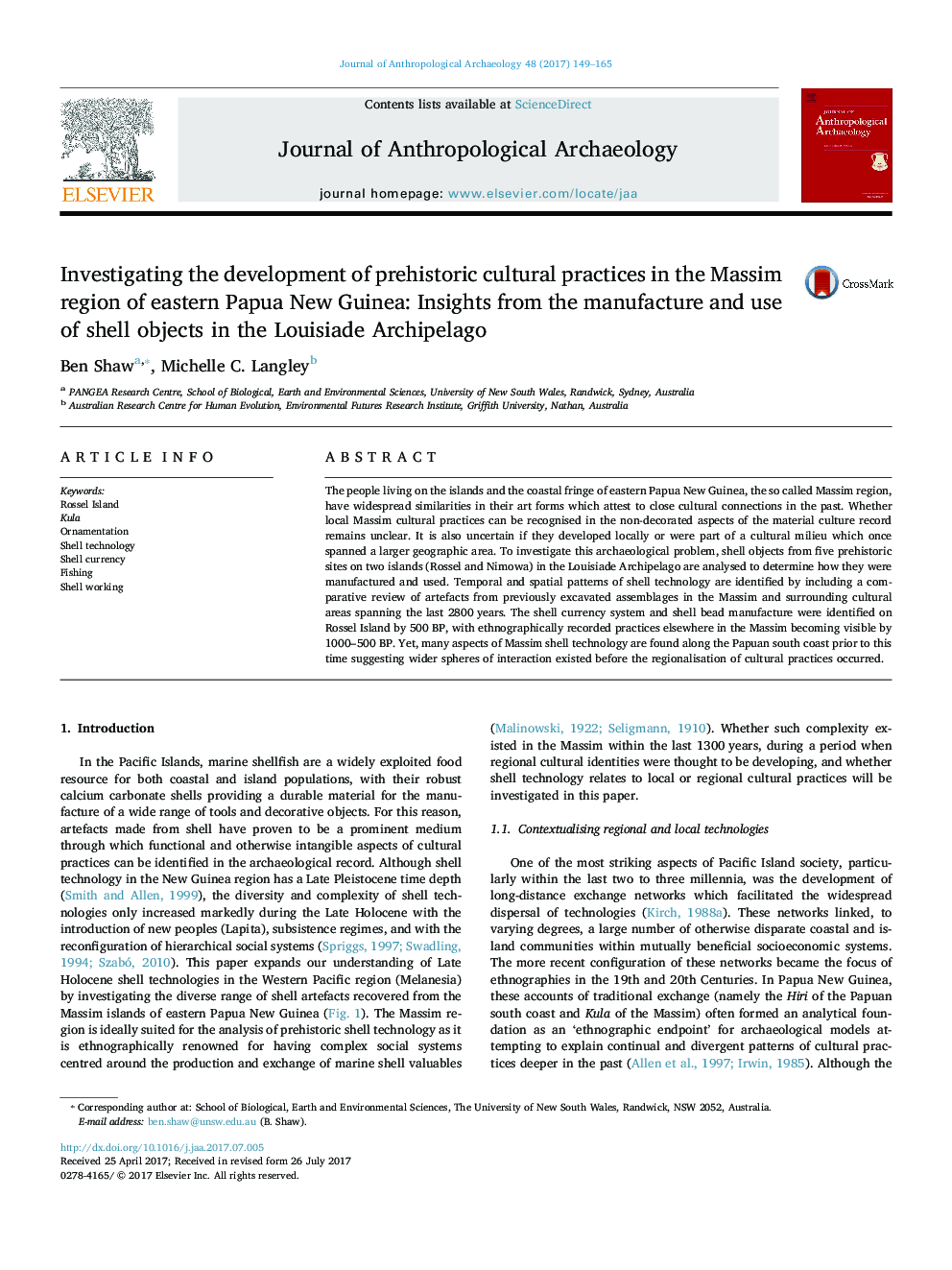| Article ID | Journal | Published Year | Pages | File Type |
|---|---|---|---|---|
| 5111903 | Journal of Anthropological Archaeology | 2017 | 17 Pages |
Abstract
The people living on the islands and the coastal fringe of eastern Papua New Guinea, the so called Massim region, have widespread similarities in their art forms which attest to close cultural connections in the past. Whether local Massim cultural practices can be recognised in the non-decorated aspects of the material culture record remains unclear. It is also uncertain if they developed locally or were part of a cultural milieu which once spanned a larger geographic area. To investigate this archaeological problem, shell objects from five prehistoric sites on two islands (Rossel and Nimowa) in the Louisiade Archipelago are analysed to determine how they were manufactured and used. Temporal and spatial patterns of shell technology are identified by including a comparative review of artefacts from previously excavated assemblages in the Massim and surrounding cultural areas spanning the last 2800Â years. The shell currency system and shell bead manufacture were identified on Rossel Island by 500Â BP, with ethnographically recorded practices elsewhere in the Massim becoming visible by 1000-500Â BP. Yet, many aspects of Massim shell technology are found along the Papuan south coast prior to this time suggesting wider spheres of interaction existed before the regionalisation of cultural practices occurred.
Keywords
Related Topics
Social Sciences and Humanities
Arts and Humanities
History
Authors
Ben Shaw, Michelle C. Langley,
